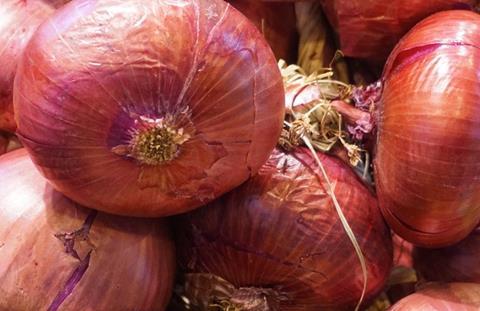
The ingredient trend has been kind to a number of fresh produce items this year, not least onions and garlic, which are seeing healthy volume growth.
In the 52 weeks to 22 May 2016, sales of garlic rose 8.7 per cent to £36.7 million, with volumes rising 8.6 per cent [Kantar Worldpanel]. Onion volumes, meanwhile, rose 3.1 per cent despite price deflation pushing values down 1.4 per cent to £215.6m.
Both products are benefiting from the huge popularity of cooking shows and cookbooks, which seem to have received a new lease of life in the past couple of years.
“Consumer interest in garlic almost certainly stems from the wider resurgence in home cooking from scratch, along with consumers’ ever-increasing thirst for produce knowledge – varieties, where it is grown, how to prepare and store etc,” says Darren Bevan, commercial director at JDM Food Group. “As the quality and quantity of TV cookery programmes, news articles, social media feeds and online recipes grows, so does consumer confidence in using and handling garlic.”
Add in the trends for lower salt, clean no-additive eating, a demand for stronger, more intense flavours in a convenient-to-handle purée format, and it’s clear to see why garlic – alongside other classic ingredients like ginger and chilli – are doing so well.
It’s the same story for onions. According to Andrew Holding, chairman of British Onions and business category director for alliums and potatoes at Produce World, people are becoming more adventurous and cooking a wider range of dishes, with many of them featuring onions.
A look through the supermarkets shows a diversity of formats, with many emphasising onions’ value as an ingredient. Take Asda’s Scratch Cook diced onions, for example, or Iceland’s Farmers Market cooking onions – it’s all about highlighting to the consumer that these products are convenient, tasty and will save the home cook time.
As a mainstream staple, onions have inevitably got dragged into the price war, with Holding describing “a huge amount of downward price pressure.” A kilo of brown onions is currently selling for 65p in Tesco, 67p in Asda and just 49p in Aldi.
Nevertheless, with only around half of the onions consumed in this country produced by British growers, there would seem to be significant opportunity for production increases. This may not be shaping up to be a vintage production year – Holding describes it as a “reasonable” season ahead – but if growers can be convinced that the margins are there then there is clear potential to grow the British market share.
For garlic, there is also a need to increase production globally on this largely imported product. Demand is outstripping supply, which will put upward pressure on price if more growers do not come into the market. According to Bevan, the current shortage has been exacerbated by El Niño weather patterns, with various growing regions short on carryover stocks and other regions not having planted enough. That’s sent global prices up by as much as 80 per cent in some cases.
It all suggests a rosy future for both products if the margins are there to justify investment where there is clear consumer demand.



